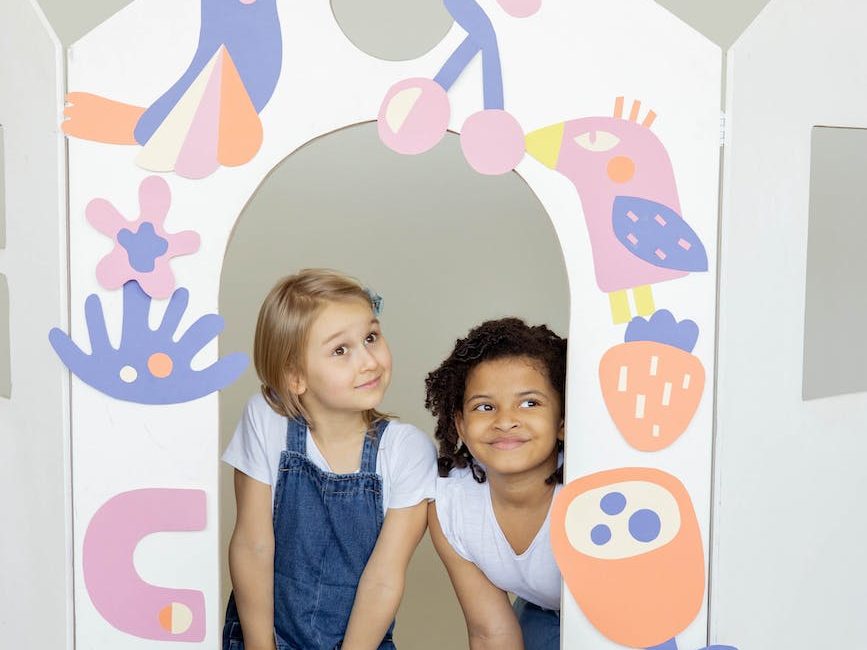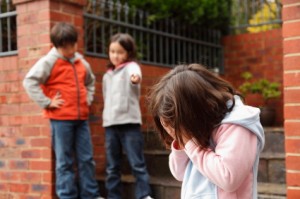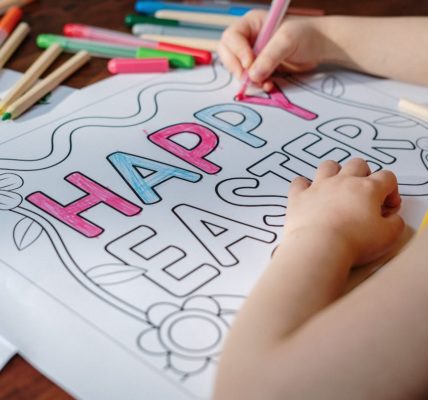
Crafting for Education and Fun
At-home educational crafts are a wonderful way to combine learning and fun for children. Engaging in hands-on craft activities not only sparks creativity but also provides numerous benefits for their educational development. Let’s explore the power of educational crafts and the advantages of engaging in these activities with kids.
The Power of Educational Crafts
Educational crafts have the remarkable ability to transform learning into an enjoyable and interactive experience. By incorporating art and creativity into educational concepts, children develop a deeper understanding and retention of the subject matter. Whether it’s creating a science experiment, constructing a historical diorama, or engaging in a math puzzle, crafts provide a tangible and visual representation of abstract concepts.
Crafting also encourages critical thinking, problem-solving, and fine motor skill development. Children learn to follow instructions, plan and execute their ideas, and make decisions during the creative process. These skills are essential for their cognitive and emotional growth, helping them become confident and independent learners.
Benefits of Engaging in Educational Crafts with Kids
Engaging in educational crafts with your kids offers a multitude of benefits that extend beyond the craft itself. Here are some key advantages:
1. Enhanced Learning: Educational crafts make learning more engaging and memorable. By involving multiple senses and incorporating hands-on activities, children are actively immersed in the learning process. This leads to better comprehension, retention, and application of knowledge.
2. Bonding and Family Time: Crafting together creates opportunities for quality bonding and family time. It allows parents and children to connect, communicate, and collaborate on a shared project. This fosters a sense of togetherness and strengthens the parent-child relationship.
3. Boosted Creativity: Educational crafts encourage creativity and imagination. Children have the freedom to express their ideas, make choices, and think outside the box. This nurtures their creative thinking skills, which are valuable in all aspects of life.
4. Development of Fine Motor Skills: Many educational crafts involve cutting, pasting, painting, and manipulating small objects. These activities help refine fine motor skills, hand-eye coordination, and dexterity, which are essential for tasks like writing, drawing, and self-care.
5. Confidence Building: Successfully completing a craft project instills a sense of accomplishment and boosts self-confidence in children. As they see their ideas come to life and receive positive feedback, they develop a belief in their abilities and become more willing to take on new challenges.
By incorporating educational crafts into your family routine, you can provide your children with a joyful and enriching learning experience. To discover a wide range of arts and crafts for kids, visit our article on arts and crafts for kids. Let’s embark on this exciting journey of creativity, exploration, and learning together!
Math and Science Crafts
Engaging in educational crafts with our kids is not only a fun way to spend time together but also an opportunity to enhance their learning in various subjects. Math and science crafts provide a hands-on approach to understanding important concepts and foster a love for these subjects. Let’s explore two types of educational crafts that are perfect for exploring math and science: exploring shapes and patterns and hands-on science experiments.
Exploring Shapes and Patterns
Craft activities that involve shapes and patterns are a fantastic way to introduce mathematical concepts to young learners. By incorporating shapes and patterns into art projects, children can develop their spatial reasoning, visual discrimination, and critical thinking skills.
One simple yet effective craft activity is creating a shape collage. Provide children with various shapes cut out from colored paper and ask them to arrange and glue the shapes on a larger piece of paper to create their own unique artwork. This activity allows them to identify and differentiate shapes while also encouraging creativity.
Another engaging craft idea is making pattern bracelets. Provide children with beads of different colors and shapes, and ask them to create patterns by stringing the beads onto a string or pipe cleaner. This activity helps children recognize and create patterns, which are essential building blocks for understanding mathematical concepts.
Hands-On Science Experiments
Science experiments provide a hands-on approach to learning scientific principles and foster curiosity and critical thinking skills. Incorporating science experiments into craft activities creates an exciting and engaging learning experience for children.
One popular science experiment is the volcano eruption. Using simple ingredients like baking soda, vinegar, and food coloring, children can create their own miniature volcano and witness a chemical reaction in action. This experiment not only introduces children to the concept of chemical reactions but also allows them to explore cause and effect relationships.
Another fascinating science experiment is growing crystals. By following a simple procedure and using household materials like salt or sugar, children can observe the process of crystal formation over time. This experiment introduces children to the concept of crystallization and allows them to observe the unique structures and properties of crystals.
By engaging in math and science crafts, we can make learning a hands-on and interactive experience for our children. These activities not only enhance their understanding of mathematical and scientific concepts but also nurture their creativity and problem-solving skills. For more ideas on educational crafts and creative projects for kids, visit our article on arts and crafts for kids.
Language Arts and Literacy Crafts
Engaging children in language arts and literacy crafts is a wonderful way to foster their love for reading, storytelling, and language development. These educational crafts provide a hands-on approach to learning and create opportunities for creativity and imagination to thrive. In this section, we will explore two exciting language arts and literacy crafts: storytelling and puppet making and DIY word games and flashcards.
Storytelling and Puppet Making
Storytelling and puppet making go hand in hand, allowing children to bring their own stories to life. Start by encouraging your child to create their own story using their imagination. They can develop characters, plotlines, and settings. Once the story is ready, it’s time to make puppets to represent the characters.
To make puppets, gather materials such as paper bags, socks, or craft sticks. Help your child cut out or draw the facial features, clothing, and accessories of each character. Get creative with different colors, textures, and patterns. Once the puppets are ready, your child can use them to act out their story, enhancing their storytelling skills and boosting their confidence.
DIY Word Games and Flashcards
Word games and flashcards are fantastic tools for building vocabulary, improving spelling, and enhancing language skills. Creating DIY word games and flashcards can be a fun and interactive activity for both you and your child.
To make word games, consider creating a word search or a crossword puzzle. Choose age-appropriate words and themes that align with your child’s interests. You can use online templates or draw grids on paper to create the puzzle. Include a list of words for your child to find or fill in the crossword puzzle.
Flashcards are simple yet effective tools for learning new words and concepts. Help your child make their own flashcards by cutting out squares or rectangles from cardstock or sturdy paper. Write a word on one side and its corresponding definition or an image on the other side. Your child can use these flashcards for memory games, spelling practice, or even to create their own educational games.
By engaging in these language arts and literacy crafts, your child will develop a deeper appreciation for storytelling, enhance their vocabulary, and strengthen their language skills. Remember to make learning fun and interactive by incorporating elements of play and creativity. For more arts and crafts for kids, check out our article on arts and crafts for kids.
Next, let’s explore historical events and cultures through history and social studies crafts. We’ll discover the joy of creating maps, globes, and historical dioramas. Join us in the next section to embark on a creative journey through time!
History and Social Studies Crafts
Engaging in history and social studies crafts is a fantastic way to make learning about the past and different cultures fun and interactive for kids. By incorporating hands-on activities, children can gain a deeper understanding and appreciation for historical events and the world around them. In this section, we will explore two exciting history and social studies crafts: creating maps and globes and constructing historical dioramas.
Creating Maps and Globes
Creating maps and globes provides children with a tangible way to explore geography and learn about different countries and continents. It allows them to visualize the world and understand the relationships between different locations. There are various ways to create maps and globes, depending on the materials and level of detail you’d like to incorporate.
For younger children, a simple map or globe can be made using paper and markers. Encourage them to draw the continents, oceans, and major landmarks. As they progress, you can introduce more advanced techniques, such as using papier-mâché to create a three-dimensional globe or tracing and coloring maps from different historical periods. This hands-on approach not only enhances their geographical knowledge but also nurtures their creativity and fine motor skills.
To add an educational twist, you can use the maps and globes as a starting point for discussions about historical events and cultural diversity. Ask questions like, “Can you find the country where the pyramids are located?” or “What major historical events happened in this region?” This encourages critical thinking and fosters a deeper understanding of history and social studies. For more craft ideas, check out our article on arts and crafts for kids.
Constructing Historical Dioramas
Historical dioramas offer a hands-on way for children to bring history to life. By constructing three-dimensional scenes, they can immerse themselves in different time periods and better visualize historical events. Dioramas can depict anything from ancient civilizations to famous battles or significant moments in history.
Start by choosing a historical event or time period that interests your child. Then gather materials such as shoeboxes, craft paper, clay, and figurines to create the diorama. Encourage your child to research the event or time period, including details like costumes, architecture, and landscapes. They can then use these details to recreate the scene in the diorama.
The process of constructing historical dioramas not only helps children develop their fine motor skills but also encourages research, critical thinking, and storytelling abilities. As they work on their diorama, encourage them to explain the historical significance of the scene and engage in discussions about the event or time period. This strengthens their understanding of history and social studies in a hands-on and engaging way.
Remember, the key to successful educational crafting is to choose age-appropriate projects, encourage creativity and imagination, and foster a love for learning. By incorporating history and social studies crafts into your child’s educational journey, you can make learning an enjoyable and memorable experience. For more crafting ideas, visit our article on creative projects for kids.
Arts and Crafts for Fine Motor Skills
Engaging in arts and crafts activities is not only a fun way to spend time with your kids, but it also offers numerous educational benefits. When it comes to developing fine motor skills, certain art and craft projects are particularly effective. In this section, we will explore painting and drawing activities as well as paper crafts and origami.
Painting and Drawing Activities
Painting and drawing activities are excellent for honing fine motor skills in children. These activities require precise hand movements, such as holding a paintbrush or manipulating a pencil, which help develop control and coordination. By encouraging your child to explore different painting techniques and experiment with various art supplies, you can enhance their fine motor skills while fostering their creativity.
Here are a few painting and drawing activities to consider:
-
Finger painting: Finger painting allows children to use their fingers as paintbrushes, helping them develop finger strength and dexterity. It also allows for tactile exploration and sensory stimulation.
-
Watercolor painting: Watercolor painting requires delicate brush control and blending techniques, which help refine fine motor skills. Encourage your child to experiment with different brush strokes and color mixing.
-
Drawing with different materials: Provide your child with a variety of drawing materials, such as colored pencils, markers, and chalk. This allows them to practice holding different tools and applying different pressures, promoting fine motor skill development.
Remember to create a supportive and encouraging environment while engaging in painting and drawing activities. Offer praise for their efforts and provide guidance when needed. For more creative project ideas, check out our article on creative projects for kids.
Paper Crafts and Origami
Paper crafts and origami are not only enjoyable but also highly beneficial for fine motor skill development. These activities require precise folding, cutting, and gluing, which enhance hand-eye coordination and finger dexterity. Additionally, they promote spatial awareness and problem-solving skills.
Consider the following paper crafts and origami projects:
-
Paper airplanes: Folding paper airplanes teaches children how to follow instructions, manipulate paper, and understand basic principles of flight. They can experiment with different folding techniques to create airplanes with varying designs and flight patterns.
-
Paper collages: Collage-making involves cutting and pasting various shapes and materials onto a paper surface. This activity helps children refine their cutting skills, practice hand-eye coordination, and express their creativity.
-
Origami animals: Origami is the art of paper folding. Creating origami animals introduces children to geometric shapes and improves their fine motor skills as they fold and manipulate the paper. They can start with simple origami designs and gradually progress to more complex ones.
Remember to choose age-appropriate projects and provide assistance as needed, especially for younger children. For more ideas and inspiration, you can explore our article on diy crafts for children.
By incorporating painting and drawing activities as well as paper crafts and origami into your crafting sessions, you can nurture your child’s fine motor skills while fostering their artistic abilities. These activities not only provide educational benefits but also create wonderful opportunities for bonding and creativity. So gather your art supplies, unleash your imagination, and enjoy the journey of artistic exploration with your child.
Tips for Successful Educational Crafting
Engaging in educational crafts with your kids can be a rewarding and enriching experience. To ensure a successful and enjoyable crafting session, here are some helpful tips to keep in mind:
Choose Age-Appropriate Projects
When selecting educational craft projects, it’s important to consider the age and developmental level of your child. Choose activities that are suitable for their abilities and interests. For younger children, opt for crafts that focus on basic skills such as color recognition, shape sorting, and sensory exploration. As they grow older, you can introduce more complex projects that involve problem-solving, critical thinking, and creativity.
To find age-appropriate craft ideas, check out our articles on creative projects for kids, diy crafts for children, and easy art projects for kids. These resources offer a wide range of crafts suitable for different age groups and skill levels.
Encourage Creativity and Imagination
Educational crafting is an opportunity for children to express their creativity and imagination. Encourage your child to think outside the box and explore different possibilities when working on a craft project. Provide them with a variety of materials, colors, and textures to spark their imagination. Let them make their own choices and decisions throughout the crafting process, fostering a sense of ownership and pride in their creations.
Crafting can also be a great way to promote self-expression and boost self-confidence. Encourage your child to share their thoughts and ideas about their craft, and praise their efforts and achievements. This positive reinforcement will motivate them to continue exploring their creativity.
Make Learning Fun and Interactive
The key to successful educational crafting is to make learning enjoyable and interactive. Incorporate educational concepts and skills into the craft projects in a fun and engaging way. For example, if you’re working on a craft related to shapes and patterns, encourage your child to identify and create different shapes using various materials.
You can also integrate learning opportunities into the crafting process by discussing the materials being used, explaining the steps involved, and asking open-ended questions. This not only reinforces educational concepts but also encourages critical thinking and problem-solving skills.
For more craft ideas and inspiration, be sure to check out our articles on family crafting ideas, toddler art activities, preschool craft ideas, seasonal crafts for kids, and holiday crafts for kids. These resources offer a wide range of craft ideas that combine fun and learning.
By following these tips, you can create a positive and educational crafting experience for both you and your child. Enjoy the journey of exploring new concepts, developing skills, and creating lasting memories together through the magic of educational crafts.






